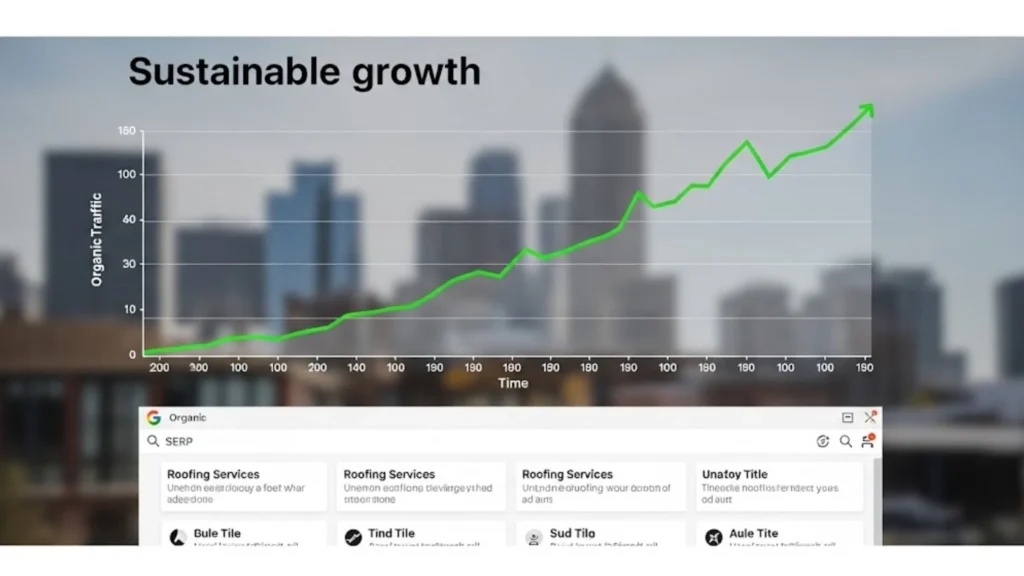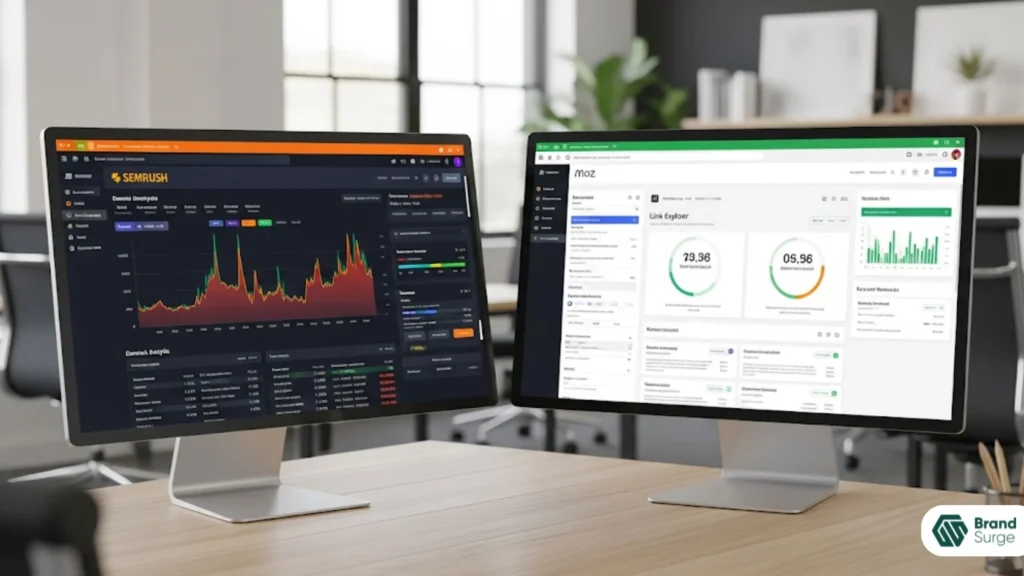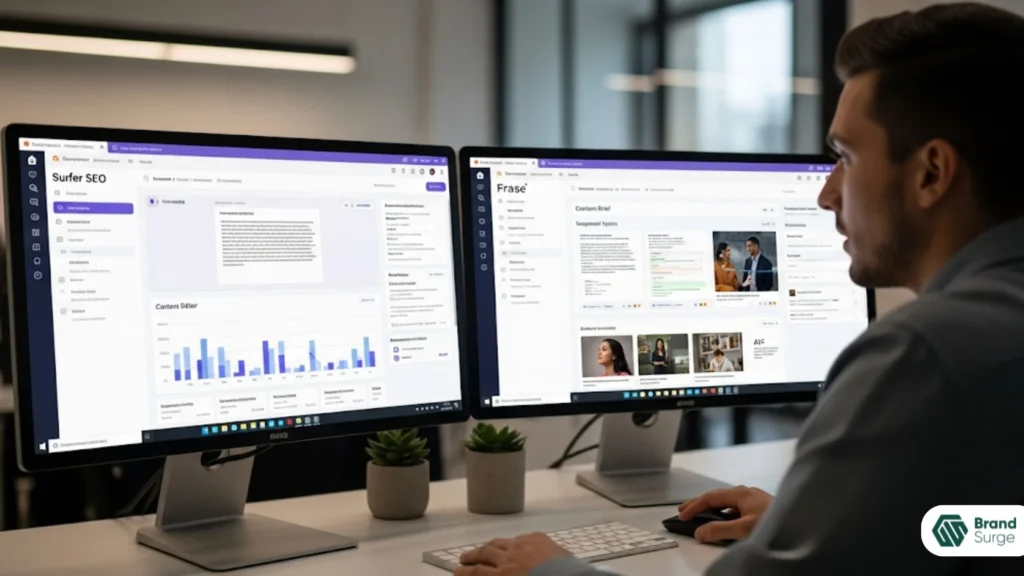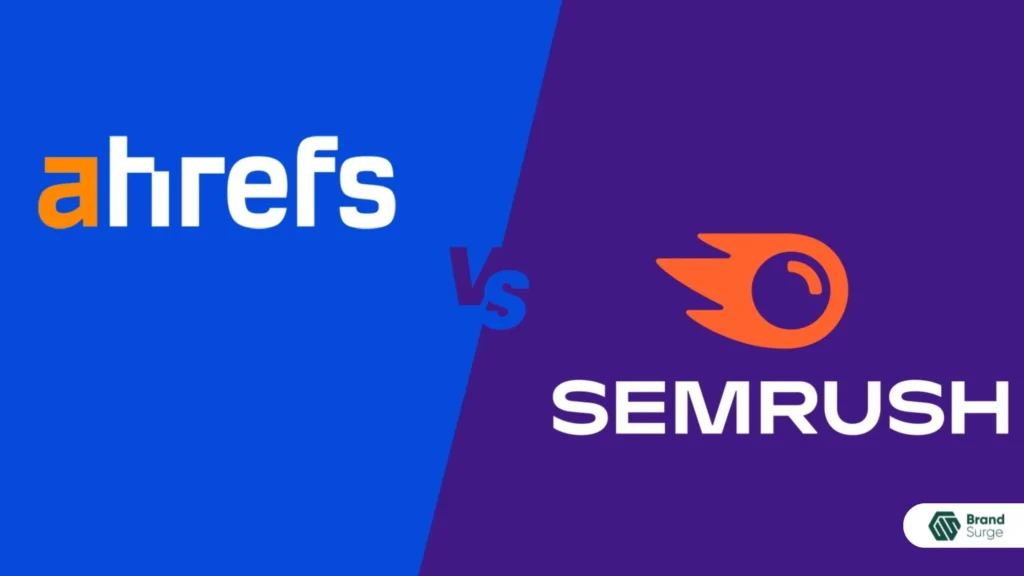The decision between Roofing SEO vs. PPC Ads often defines a roofing contractor’s lead generation success. An in-depth analysis of the top three competitor blogs reveals common threads: the long-term value of organic traffic, the instant visibility of paid search ads, and the nuanced budget calculus of cost per click (CPC). By examining how these channels perform in terms of return on investment (ROI) for roofers, this blog will guide roofing companies toward the strategy that aligns best with their roofing marketing strategies and local service goals.
What Are the Key Differences Between Roofing SEO vs. PPC Ads?
Roofing SEO vs. PPC Ads each serve unique roles within a digital marketing funnel. SEO focuses on improving organic rankings on Google Search, Bing, and other search engines through keyword research, on-page optimization, and backlink acquisition. In contrast, pay-per-click for roofers requires bidding on keywords and paying for every click on paid search ads, enabling instant placement at the top of search engine results pages (SERPs).
How these channels differ in cost and performance often hinges on budget constraints and desired timeline. SEO requires an upfront investment in content marketing, technical audits, and local citations, but drives organic traffic over the long haul. PPC Ads demand ongoing budget allocation for each user click, yet deliver immediate visibility and granular targeting based on demographics and geotargeting.
How Does Roofing SEO Deliver Sustainable Growth?

Roofing SEO emphasizes content, technical optimization, and local engagement. Plumbing, HVAC, and roofing are highly local industries, making local roofing SEO crucial. By targeting service area keywords such as “roof replacement in [City]” or “emergency roofing repair,” contractors can capture high-intent searchers searching for immediate solutions.
Content pillars—like blog posts on roof maintenance tips, seasonal roofing checklists, and material comparisons—signal topical authority to search engines. Entities such as Google My Business, schema markup for local businesses, and citation management reinforce local signals. Over time, these combined tactics nurture organic traffic and compound returns, often pushing roofing companies into the coveted local pack on Google.
In this context, investing in Roofing SEO Services can unlock referral traffic from homeowner forums, social media shares, and backlink partnerships with construction associations. Each incremental content asset and optimized landing page strengthens domain authority.
How Do Pay-Per-Click Ads for Roofers Operate?
Pay-per-click campaigns harness platforms like Google Ads and Microsoft Advertising to auction ad placements. Contractors bid on keywords such as “roofing contractor near me” or “roof leak repair cost,” setting a maximum CPC they’re willing to pay. Once live, these paid search ads occupy prominent positions above organic listings, maximizing early-stage visibility.
PPC offers precise controls over daily budgets, ad scheduling, and device targeting. Advanced features such as remarketing lists for search ads (RLSA), call-only ads, and dynamic search ads further refine audience reach. Conversion tracking via Google Analytics and Google Tag Manager ensures that roofing businesses can calculate ROI for roofers, adjusting bids based on cost per conversion rather than simple CPC.
Through careful management of ad copy, landing page relevance, and negative keywords, a roofing contractor can maintain Quality Scores above 7, reducing average CPC while boosting click-through rates (CTR).
Roofing SEO vs. PPC Ads: Cost and Budget Comparison
Budget allocation between SEO and PPC demands a clear understanding of short-term versus long-term ROI. Roofing SEO typically has a fixed monthly retainer covering content creation, technical improvements, and local citation management. PPC budgets, however, fluctuate with auction dynamics and seasonal demand spikes.
| Metric | Roofing SEO | PPC Ads |
| Upfront Investment | Content development, site audits, backlinks | Campaign setup fees, initial keyword bids |
| Ongoing Costs | Monthly retainer for SEO agency or specialist | Daily or monthly ad spend |
| Timeline to Lead Generation | 3–6 months for measurable organic traffic | Immediate upon campaign launch |
| Cost per Lead Approximation | $50–$150 (varies by market and competition) | $20–$100 (depending on bid strategy and region) |
| Long-Term ROI | Compounding growth, continued traffic gains | Dependent on ongoing budget |
While PPC Ads often produce leads faster, Roofing SEO compounds value, reducing average cost per lead over time. A balanced strategy might involve seeding initial campaigns with PPC and transitioning budget toward organic growth as SEO traction builds.
Measuring Return on Investment (ROI) for Roofers
Tracking ROI requires integrating multiple data sources. For SEO, Google Analytics Goal Completions, Assisted Conversions, and Google Search Console impressions reveal keyword performance and organic traffic growth. For PPC, ad platforms offer conversion metrics, cost per conversion, and conversion rate percentages. By comparing leads attributable to each channel against spend, roofers can calculate their true cost per lead.
An example formula:

To maximize ROI, roofing companies often:
- Define clear conversion actions (form submissions, phone calls, quote requests).
- Assign monetary value to each conversion based on average job size.
- Use call tracking numbers to attribute offline calls properly.
- Adjust bids and content focus based on performance data.
Integrating Roofing SEO and PPC Ads for Maximum Impact
A holistic digital lead generation roofing strategy blends both channels. PPC campaigns immediately feed the top of the marketing funnel, generating brand recognition and quick wins. Concurrently, SEO efforts build trust, domain authority, and a consistent organic traffic stream.
When PPC keywords reveal high-value search queries, SEO content teams can create dedicated landing pages around these terms, amplifying content relevance. Conversely, SEO insights on local search trends can inform PPC ad scheduling and bid adjustments. This cross-channel synergy minimizes overlap, ensures keyword continuity, and maximizes overall lead volume.
For roofing contractors ready to scale, a phased approach works best: start with targeted paid search ads, concurrently implement local SEO best practices, then gradually shift budget toward the channel demonstrating the best cost per conversion.
Technical SEO Best Practices for Roofing Companies

Technical optimization underpins successful SEO. Crawl budget management, XML sitemaps, and robots.txt configuration ensure search engines index the right pages. Page speed improvements—via image compression and server caching—reduce bounce rates, especially on mobile devices where homeowners search via voice commands or local maps.
Structured data markup using schema.org’s LocalBusiness and Service schema helps search engines understand the roofing contracting business model. Rich snippets—featuring star ratings, service areas, and business hours—enhance SERP appearance. Proper internal linking across service pages, blog posts, and resource hubs maintains topical hierarchy and distributes page authority.
Crafting Content That Converts Organic Traffic
Content marketing for roofing companies must strike a balance between educational value and conversion optimization. Blog posts on topics like “Signs You Need a Roof Inspection” or “Comparing Asphalt Shingles vs. Metal Roofing” serve informational intent. Each post naturally incorporates LSI keywords such as “roof replacement cost,” “roof inspection checklist,” and “roof repair warranty.”
Strong calls to action (CTAs)—for example, “Request a Free Roofing Estimate”—guide visitors toward form submissions. Downloadable assets like seasonal maintenance guides increase email subscriber lists. Social proof in the form of testimonials and case studies reinforces credibility, nurturing leads until they’re ready to engage.
Optimizing PPC Campaigns for Roofing Contractor Advertising
Effective PPC management relies on continuous testing. Ad copy should highlight unique selling propositions: licensed and insured teams, free roof inspections, 24/7 emergency service. Ad extensions—sitelinks, callouts, structured snippets, and location extensions—provide additional real estate and context.
Geotargeting confines ad delivery to serviceable ZIP codes or radius targeting around headquarters. Dayparting shifts budget toward peak inquiry hours, typically early mornings and evenings when homeowners research repairs. Remarketing audiences reconnect with site visitors who didn’t convert initially, displaying banner ads across the Display Network to keep the brand top of mind.
Comparative Performance Metrics
| Performance Metric | Roofing SEO | PPC Ads |
| Click-Through Rate (CTR) | 3–5% (on optimized meta tags) | 5–10% (with ad extensions) |
| Conversion Rate | 2–5% (on optimized landing pages) | 3–8% (with refined targeting) |
| Cost per Click (CPC) | N/A (organic) | $1.50–$8.00 (varies region) |
| Lead Volume Over 12 Months | High, compounding | Moderate–High, budget-driven |
| Lead Quality | Warm, research-oriented | Mixed, high-intent and exploratory |
These benchmarks illustrate how organic traffic from SEO often yields warmer leads due to research intent, while PPC can capture both exploratory and urgent inquiries.
Local Roofing SEO: Dominating the Local Pack
Appearing in Google’s Local Pack can dramatically increase leads. Roofers must optimize Google My Business profiles with complete NAP (Name, Address, Phone), service areas, photos of recent projects, and solicited customer reviews. Local citations on directories like Yelp, HomeAdvisor, and Angie’s List reinforce prominence.
Geo-targeted content—blog posts on weather-related roofing concerns in specific regions—further cements the local relevance. Schema markup highlighting service territory ensures Google associates the business with the appropriate locale.
Budget Allocation Recommendations
For new roofing businesses with limited budgets, a 70/30 split favoring PPC can deliver quick leads while SEO groundwork takes hold. Established contractors with consistent cash flow may opt for a 50/50 balance, progressively channeling more funds into SEO as organic traffic and brand recognition grow.
Ultimately, each business must monitor cost per lead, conversion rates, and overall ROI, rebalancing investments every quarter.
Conclusion: Roofing SEO vs. PPC Ads
Roofing SEO vs. PPC Ads both present compelling cases for lead generation. SEO lays the foundation for sustained organic traffic, compounding value over time through local roofing SEO, content marketing, and technical best practices. PPC Ads provide immediate visibility and granular control over cost per click and targeting, ideal for businesses seeking quick wins or launching new service areas.
A blended approach often yields the best return on investment for roofers, harnessing the speed of paid search ads alongside the durability of search engine optimization. As Roofing SEO vs. PPC Ads strategies mature, contractors should continually analyze performance metrics, refine budgeting, and expand successful keywords into both channels.
Brand Surge LLC provides comprehensive digital lead generation services for roofing professionals, integrating expert Roofing SEO and strategic PPC Ads management to maximize ROI and lead volume.
Frequently Asked Questions
1. What budget should a roofing contractor allocate between SEO and PPC?
Budget allocation depends on business maturity and goals. New companies might favor PPC for immediate leads, while established contractors invest more in SEO for long-term organic growth.
2. How quickly can roofing companies expect leads from SEO?
Typically, measurable organic traffic and leads begin around 3–6 months after SEO implementation, depending on competition, content quality, and technical site health.
3. Can PPC Ads improve organic rankings?
While PPC spend doesn’t directly boost SEO rankings, the increased brand awareness and click-through rates (CTR) from ads can indirectly support SEO performance.
4. Are pay-per-click ads cost-effective for roofing contractors?
PPC can be highly cost-effective when campaigns are tightly managed with refined targeting, negative keywords, and optimized ad copy to maintain strong Quality Scores and low CPC.
5. How does local roofing SEO complement PPC campaigns?
Local SEO identifies service area keywords and local intent, which PPC managers can then add to search campaigns for better relevancy. Simultaneously, PPC findings inform SEO content strategy.



